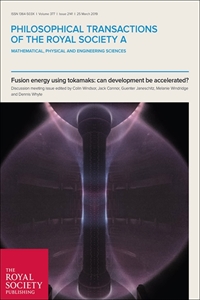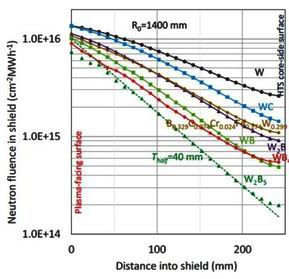
Colin was born into a very happy, if entirely unscientific family. His birthday 28/6/1938, was just before the start of the Second World War. His unscientific life-story is told on separate pages. Family life in the war was a worry for his parents: they often had to sleep in their concrete bunker in the garden, but it was not really a worry for him. He remembers happily shooting at passing German planes with his "ack-ack" toy gun from the roof of the bunker. His father George Windsor (1900 - 1991) was a civil servant going up to London every morning from their home in West Wickham, South East London. His mother "Ray" Windsor, nee Rayment, (1908-2000) was a full-time housewife. They were both interested in tennis and table tennis and music and these interests rubbed off on Colin.
He looks back thankfully to those days of the 11plus exam
(a morning's exam with English, Arithmetic and IQ papers) which enabled the lucky ones to go to
superb schools. He went to Beckenham and Penge Grammar School, a boys only school which his father
had attended before him, although in another building. The schooling was disciplined, ordered and good,
and he thrived. The Science facilities were superb, with Senior and Junior labs for Physics and Chemistry,
stocked full of ancient but serviceable apparatus. It is to his physics teacher Mr Davies and his
chemistry teacher Mr Ridgewell that he owes his scientific life. Always busy, they always had time
for his questions. In his slightly solitary way, he would
take his textbooks home, and after homework was done, read them far ahead of the syllabus in the quiet of his bedroom.
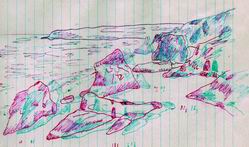
His drawing interest started early and one was inspired by the first
[3d] cinemas with red and green glasses. Colin drew in red and green biros a picture of
in Cornwall.
Click for a larger version, but you need red (left) and green (right) spectacles!
Colin's father had as part of his job in the Ministry of Health visited factories. One day
he took Colin along to a lens factory and he came away with a stack of reject lenses, large and small.
The drawing shows Colin's room with his desk and the two-bar fire which he would sit near reading.
The drawing was made with a sort of "camera obscura" from a wooden box, a nice big lens from the
collection, a mirror and a glass plate on which you put some tracing paper.
Click for more details.
One particular lens, with a positive focal length of a metre was ideal for a telescope. This was duly made
and cold evenings spent in the garden searching the heavens. The picture shows his photo of the moon
made in the garden with a piece of old roll film and home developing.
His mother was patient. When he wanted to set up a Bunsen burner for chemistry experiments in her
kitchen, she arranged for a proper fixing point - not the rubber pipe on to a tube used a school.
He would take his Father's ammonium nitrate garden fertiliser and heat it to get ammonia. Physics took
an equal place to Chemistry.
The grammar school headmaster Mr White put the idea of Magdalen College, Oxford into his head. Another pupil had made it
there the year before. It meant staying on in the third year sixth form and taking the special Oxford exam in January.
Colin remembers well the visit there, staying in a Magdalen College room, the really hard exam papers, but
the friendly interview. He got a "demyship" (Magdalen's own word for a scholarship - it means a half fellowship).
How lucky he feels it was to have that opportunity, without saddling himself or his parents in debt.
There was no point in staying on at school and he left for a 6-month job at the Mullard Research Laboratories
at Redhill. His energetic boss, Dr Hoselitz, treated him as a part of the research team. He first made large single crystals
of common salt, and later used a vacuum evaporator to produce thin films of iron. The idea was for fast memory storage
using the anisotropy of the salt to hold the magnetisation of the iron. It was a good idea, but it did not work in
Colin's time. He remembers the happy daily walks up the road outside the lab after lunch.
So in October 1957 we went up to Magdalen College to the gracious room seen in the picture. The toilet may have been
across the quad and the communal bathroom even further, but it seemed like heaven. Those loving parents were far away.
He was on his own. He could do whatever he wanted. He wrote his thoughts of life in an exercise book he still has.
New friends were so easy to make. Many of those first friends were fellow Magdalen physicists.
It was not all work. Tennis excursions along the lovely Addison's Walk to the college playing fields were frequent.
Those were the days of the individual tutor. For him it worked extraordinarily well. His tutor, Mr Milford, would set him an
essay title, and he would go off to the College or University library and surround himself with books. He would try to
condense the subject first into his own notes, now in a string binder with him today, and secondly into the written essay.
Lectures were optional in those days, and he selected those he would attend with some care,
like those given in a large room in the exam schools by the historian A J P Taylor.
His main tutor was Dr Griffiths, a real character who drove a Rolls Royce, looked after the College wines,
and had a barrel of beer outside his bachelor rooms in college. He was to be Magdalen's President 1968-1979.
He had the experienced teacher's knack of letting his pupils follow their own path, even way outside the syllabus.
Colin was forever grateful of this opportunity. He remembers learning about "Monte Carlo" methods back then in the
fifties, that were to become a major tool in his later research.
The first long vacation was spent with General Electric at their factory in Erith, Kent. He joined the team
designing the reactor of the Trawsfynydd MAGNOX power station. The team was about 30 people housed in a modest hut on the giant
site. It had a firm boss who sat at the top facing everyone else. He was the only one with a telephone.
Of course there were hand calculators, and a few motor-driven calculators to break the silence.
There was the occasional visit to Harwell to run their Mercury computer. They were an experienced
team and had designed the Italian Latina reactor being constructed at the time. Colin joined with Mr Bryan in
some juicy algebra, which aimed to simplify reactivity computations. It lead to his first classified publication:
"A New Parameter for the Calculation of the Fast Fission Factor in Complex Fuel Elements.
There was plenty of music at Magdalen. Colin was always at peace attending Bernard Rose's evensong at 6.00pm.
There was the college orchestra and amateur choir, and the peaceful music rooms with their grand piano at
Magdalen and Somerville. There was the "Heritage Club" for guitars, which met in people's rooms
with plenty of wine, where Colin met Margaret, another physicist, who was to become his first wife.
After finals Dr Griffith casually said, "How would you like to do some research with me?". That meant
electron spin resonance. There was a flourishing lab mostly presided over by John Owen, a clever scientist,
with specialities in superhyperfine structure and exchange interaction measurement for coupled "pairs".
Colin joined this active team and did work in both fields. His real supervisor was neither James Griffiths, his
official supervisor, nor John Owen, but John Thornley, a research student two years ahead who answered all
his questions.
What a good education a DPhil was in those days! Everything that could be made, was made. Colin's first job was
to make a Nuclear Magnetic Resonance field measurement box. He was given the circuit by expert Neville Robinson, a
transistorised version and rather modern in 1961. The rest was made in the Clarendon Lab students' workshop presided
over by "Jenks". He would see that you held a hacksaw properly and drilled the holes with the work securely
clamped on the drill stand. He does not remember any accidents except the odd electric shock trying to mend
the temperamental Mullard magnet that supplied the magnetic fields for the experiments.
An early task was the reconstruction and computer fitting of the superhyperfine structure in
ammonium chloroiridate (NH4)2Ir,PtCl6, a classic example of covalent bonding.
Colin happened to be cycling past the University's new computer laboratory in South Parks Road on 26/11/1959,
the day the new
Ferranti Mercury computer was being delivered. He devoured the "Autocode" manual, talked to the helpful
Dr Rollet about least squares fitting, and punched up some resonance traces. He was soon delivering his first
punched paper tapes to Mrs Annette Fluendy. She was the lady
who actually ran the computer, feeding in the boxes of paper tapes, watching the cathode ray screen for signs of
an infinite loop, and boxing up the output paper tapes.
The work lead to his first published paper Electron transfer in
(IrCl6)--[1], and to several others in this field during his thesis [2,3,5,6].
His main thesis work,
The thesis production was quite a tousle. Colin bought a typewriter, and borrowed his sister's typing course notes.
Corrections to all those pages of matrices usually meant a new set of 4 sheets and carbons. It was ready in June 1963.
The thesis examiners were Dr Baker from the Clarendon and Dr Marshall from Harwell. As the latter said: "There is a
time in one's life when everyone needs to be tested to the limit and this is it".
These were the years of the "brain drain". Dr Werner Wolf at the Clarendon was starting a new
spin resonance lab at Yale, and invited Colin to join him along with Mike Hutchings, also a spin resonance PostDoc.
So it was that He and Margaret, on 22/8/63 and just married, set of on the SS Maasdam for New Haven, Connecticut.
Although their research started of with an empty room containing a crate from the Clarendon, it was a good team and they
were soon doing experiments. The picture shows research student Dave Landau, Colin, chemist Margaret Lyall, Werner Wolf,
Secretary Cori and technician Cliff. Colin really enjoyed his first American Physical Society Conference at Atlantic
City on 13/11/63. Papers were soon being written [8,11].
If the brain drain was easy, then so was the reverse. Harwell would send an interview team to New York, and
pay for your trip back. So Colin arrived at Harwell in September 1964. After his thesis viva Walter Marshall had said
how much easier it was to measure exchange interactions from spin wave neutron scattering than from pairs. It was true.
By 1966 he had published a paper on spin waves in K2MnF3[10].
But his first task at Harwell was
a more difficult problem, to extract a single crystal from the cubic antiferromagnet RbMnF3
so that he could measure its spin waves. Prof Stevenson at Aberdeen had sent down a
polycrystalline boule.
He spent happy hours on a neutron diffractometer, setting the counter to the correct diffraction angle,
searching for a big peak by changing the boule orientation, and then taking a "Polaroid" neutron
snap of the reflection.
It was difficult and measuring the scattering from a polycrystalline RbMnF3 powder collected
from his chippings was a much easier project. It soon lead to Colin's first paper from Harwell [12]: to determine
the exchange interactions from the paramagnetic inelastic neutron scattering. He turned to the
PLUTO "chopper" a time of flight rotor-driven inelastic instrument. The measurements were easy: a suitably "high"
temperature for paramagnetism was room temperature. He was able to
analyse the scattering using theory from de Gennnes.
It was this theory that set his mind on computer simulation
of Heisenberg magnets. The theory contains an equation:
dSR/dt = 4pJ/h Snn
SRxSR'.
This shows the direction a given spin vector SR will move given its present value and that
of its nearest neighbours SR. Computers can evaluate this equation given a set of initial spin
values. The differential is changed to find the actual spin movements
DSR within a small but finite time interval Dt.
Paramagnets were easy, as any random set of initial directions will go. He set up a 10x10x10 computer model and followed
it (in time units of 1/4pJS) for 4 time units with steps of 0.01. Having determined
the spin motions, and he later made a movie picture of these, it was easy to determine the spin correlation functions
<S0(0).SR(t)>, giving the mean value of the dot product of any given spin at time
zero with any other spin at position R at a time t later. The figure shows the self correlation and
the first, second and third neighbour correlations for a simple paramagnet. The results fitted well with the
measurements on paramagnetic RbMnF3 [15].
At last a 0.2cm3 single crystal was cut out from the big
boule of RbMnF3. It was a bit small for inelastic scattering but again using the PLUTO "chopper",
he obtained the data for the figure shown, published in 1966, and later to be reprinted as an
example of spin waves in Kittel's Solid State Physics. The almost linear way the dispersion curve approaches
the origin shows the negligible anisotropy in this compound, making it a model antiferromagnet. He was to work on this compound over many years.
Colin's boss in those years was Dr Ray Lowde, a character with many years of neutron scattering to his credit.
He was able to apply his infinite concentration to the discussion in hand. If the telephone rang, he would carry on
the conversation without a falter as he opened his desk draw and put the ringing telephone inside. He had a project
to measure the itinerant magnetic scattering from nickel. The discussions included most of the UK's considerable
talent in this field: Mick Lomer, John Hubbard and Stephen Lovesey from Harwell, Seb Doniach, David Edwards,
and Peter Wohlfarth from Imperial College. There were many visitors, Guy Allan from Lille, France, Joe Cable from
Oak Ridge, USA, from Japan, Jiyo Komura a PostDoc, and Takeo Izuyama the joint discoverer of iterant magnons.
The first part of the project was to acquire a nickel 60 isotopic single crystal. This had the same magnetism as
ordinary nickel but much less of the unwanted nuclear scattering background. Again the Pluto chopper was used
for the experiments. They were not easy. There were 34 counters to be calibrated with a vanadium scatterer
and combined together. There were corrections for background, for furnace scattering, for elastic scattering,
for multiple scattering, for phonon scattering, for resolution. The list seemed endless. But a series of papers
were written, including three Physical Review Letters: a fit to the Hartree-Foch free electron model [13], and a fit to Doniach's free-electron gas [15].
Guy Allan was experienced in band structure calculation. His visit prompted a tight-binding model
The next step was to measure the scattering as a function of temperature, showing the smooth transition from
the spin waves predicted by Izuyama at low temperature through the phase transition to the high temperature
paramagnetic state. The figure shows the calculated intensity
the full temperature dependence of the nickel scattering and compare with the Izuyama exchanged enhanced theory.
The spin wave scattering, which had always slightly problematic to measure over the relevant energy
transfer range
emerged very clearly in this calculation, and was equally clear in the room temperature experiments.
Similar results were performed at four temperatures spanning the transition temperature
0.5Tc,0.9Tc, Tc and 1.6Tc The work was written up as an Advances in Physics review [28].
In 1973 the UK joined the Institute Laue Langevin in Grenoble and neutron experiments of a new quality became
available to Harwell staff. Colin sometimes regrets that he did not post the application form for a job there that he once filled
in. However he performed many experiments there, some successful, some difficult and never written up. One success
was the measurement of the inelastic scattering from supercooled gallium which he performed in collaboration with the
group of Louis Bosio from Orsey, Paris. It was an enjoyable collaboration and Colin's French was never so good.
Gallium readily supercools and the experiment was to measure the dynamics of the liquid state as it approaches
its stability limit at around 150K. It was an exciting experiment. One never knew when the gallium would suddenly
crystallize as it was being cooled. The experiments were readily analysed and the inelastic width at each new temperature
could be plotted within minutes of the scan being completed. The team slowly watched the widths decrease with
decreasing temperature, with the straightforward result that the width linearly approached zero as the temperature
approached the stability limit [37,44,48].
In 1975 Colin was asked to join the Linac Review Group considering the
science possible with pulsed neutron sources. It was to change the direction of his research.
Roger Sinclair's Total Scattering Spectrometer had opened a new field
in determining the structure of liquids and glasses. Colin put a nickel
powder sample on the spectrometer sample changer. A weekend of counting revealed a
diffraction pattern extending to scattering vectors, Q), way higher than possible on
reactors. Starting from first principles, Colin showed that in the epithermal high neutron
energy range the scattering intensity per resolution element was independent of neutron energy.
Colin immediately set to and
developed a time of flight version of the Reitvelt profile refinement code he had used for
reactor diffraction patterns. It was a new task, the wavelength dependence of the resolution
was quite different and new peak profile shapes had to be determined. It was reported at the
Pettan Neutron Diffraction conference in 1975 [43].
In fact the diffraction patterns continued until the structure was attenuated by the thermal
vibration amplitude of the atoms, the Debye Waller factor. Colin and Roger Sinclair developed the
code showing that these thermal parameters could be determined in detail [45]. The profile
refinement programs now universally used on pulsed sources are all based on the classic paper of
Von-Dreele, Jorgenson and Windsor [81].
The new Harwell Linac was approved in 1976, and Colin became Group Leader of Pulsed
Neutron Scattering. Although a group leader since 1972, they now had a real team with a
mission. There was Roger Sinclair, Les Bunce, Chris Tasker, DAG Johnson, and part-time
secretary Hilda Whitmarsh, who would drive them to the Cherry Tree in Steventon every
Friday lunchtime. They had their own space: a reconditioned "terrapin" hut.
They had just one year before the old linac was dismantled to prove the their methods.
It was the hot summer of 1976. They ran around the "Condensed Matter Hut", shirts off, moving the many resin
blocks needed for the new instruments. In that summer with help from Brian Boland, Zoe Bowden,
Dave Mildner and others from the Rutherford Laboratory, they designed, build and later wrote up
a series of new instruments. The Back Scattering Spectrometer [51] was first. It followed
as far as feasible the improvement in resolution which comes as back scattering is approached.
The figure shows how the new diffraction pattern carries on from where the Total Scattering Spectrometer disappeared.
This is partly because the 77K temperature of the sample limits the Debye Waller attenuation
shown on the Total Scattering Spectrometer measurements.
Next was the Inelastic Rotor spectrometer [59], build by Les Bunce, Dave Mildner and Brian Boland
from an old reactor instrument rotor, old reactor counters, and constructed from old resin blocks!
It worked well and measured a series of experiments. The figure shows the famous vibrational spectrum
of liquid water with its peak at 210 eV.
There was one quite novel spectrometer invented by Colin. A highly important field of neutron scattering
was the measurement of coherent inelastic scattering, like the phonons and magnons of crystals.
Around 1952 at Canada's Chalk River Laboratory
Brockhouse had invented
the triple axis spectrometer. It was soon ubiquitous at research reactors. They could not work
on pulsed sources, and Colin spent hours dreaming how it could be done. The answer came to him in
the big bath of Avebury House and he remember getting out, drying himself and going to write it
down on paper. The "Constant Q Spectrometer" [58] moved quickly, and soon there was a prototype spectrometer in the waste beam
behind the Total Scattering Spectrometer. It was to become one of the first spectrometers on ISIS [114].
In addition a liquid nitrogen moderator was installed [57] and some initial
small angle scattering experiments made [63].
An important step for pulsed neutron science was the "Hot Neutron Scattering"
meeting that Colin
organised in the spring of 1977. It was a two-day meeting with many of the leading international players present
and with lots of time for discussion. It included
a nights stay at Wadham College, Oxford, with an evening dinner and discussion. My secretary Hilda Whitmarsh
did the organisation superbly. The programme concentrated entirely on the science of pulsed neutrons and
how the existing neutron science based on reactors could be extended. It was quite the first of its kind.
Who knows what influence it eventually had, but now, most new neutron sources are pulsed.
The related "High Symmetry Spectrometer" was soon built at KENS the Japanese pulsed source.
Colin went over there for 2 months in 1980 on a grant from the Japanese Society for the Promotion of Science.
Then in 1977 the old linac shut down. Colin and Roger Sinclair had already worked out their ideas for the
instruments on the new linac. They were defined much as they were to come into being in their paper
"A Discussion Paper for the Exploitation of the Harwell LINAC for Condensed Matter Studies".
There was not so much to do.
In the spring of 1978 Colin was invited by Professor Dugdale to give a series of lectures on
WHO NEEDS PULSED NEUTRON SCATTERING?
The lectures were written up as notes and from these Colin
set to work writing "Pulsed Neutron Scattering" [71] the first,
and still the only book on the subject. It was published by Taylor and Francis in 1981.
1982 was the 50th aniversary of Chadwick's discovery of the neutron. Peter Schofield organised a big conferrence in Cambridge and I was a part-organiser helping particularly with the exhibition. A particular achievment was to get Brockhouse's first triple axis spectrometer over from Canada. It was also shown at the Royal Society Soiree that year.
Even before these pulsed neutron experiments in the mid sixties a wind of change was sweeping
through Harwell. Walter Marshall became Deputy Director of Harwell and later Director. Harold Wilson
wanted the "white heat" of technology spread to industry. Walter embraced it, as did Colin, and he
with Group Leader Peter Egelstaff performed the first commercial neutron scattering experiments. They
were for English China Clay and were successfully written up. The first industrial neutron publication
was in 1974 for the Cement and Concrete Association [42]. They wished to measure, not just the amount of
water in concrete, but the amount that was chemically bound to the concrete compared to the amount
of free water. The figure shows the measurements. The broad peak is from free water and shows the
characteristic width in energy arising from the diffusion of water molecules. The narrow peak has merely
the broadening characteristic of the experimental resolution and represents the bound water. It was a
simple matter to measure the free to total water fraction. There was no sign of any intermediate bonding
and the measurements gave a much smaller fraction than did conventional drying measurements.
Numerous applied neutron experiments followed over the coming years, including in 1980 a review "Neutron
beams for industry" with Chris Wright for New Scientist [68]. Colin had a long partnership with Gerry Slattery
from the Risley Laboratory of UKAEA leading to several papers and reports on the phases present in
stainless steels [84] and maraging steels [92]. It also lead to a review of the "Metallurgical
applications of neutron beams" [83]. A second long-lasting partnership was with the Berkeley
Laboratory of the then Central Electricity Generating Board. The first study was on the so-called
gamma prime phases present in stainless steel with Vince Callen and Pat Rose [89]. It moved on to a long-term
study of the precipitate structure in pressure vessel steels.
Much of this work was reviewed at a special symposium on "Applied Neutron Scattering" held as part of the IoP
Solid State Conference on 20/12/1989 (The programme is reproduced here) and published as a special issue of
Nondest. Test. Eval. Vol 5, 305-423, 1990 with Colin as Guest Editor.
Yet another long term partnership was with Alan Bowen of the Royal Aircraft Establishment Farnborough,
on the clusters formed under heat treatment in evaporated steels. These steel had excellent mechanical
properties due to their absence of conventional crystallites with grain boundaries. Small angle scattering
was a powerful tool to reveal the size and concentration of the tiny clusters of solute atoms that were
formed with heat treatment. We describe later how Colin's computer models were to interpret the data [115].
It was on a trip in 1980 to the Welding Institute at Abington near Cambridge to try to obtain industrial
contracts that Colin stumbled on the importance of residual stresses. They were expert at that
institution on the measurement of internal stresses in metals by shaving of slices of metals and measuring
the surface strain changes. It was a time-consuming and difficult task and they impressed on Colin
that the most important application of the penetrating power of neutrons would be to measure internal
stresses in samples non-destructively. The method is easy in principle. A simple powder diffraction peak
gives the lattice spacing and strain is simply the relative change of lattice spacing.
The problem is the practice! The magnitude of typical residual stress lattice changes is only a few times
10-3 and this is very high resolution by the neutron diffraction standards of the 1970s.
But Colin had recently been immersed in this problem, and its solution via back scattering that he had used
on the linac. In a short time he had devised the Double Back Scattering Spectrometer and it was detailed and
constructed by Peter Schofield, Mike Hutchings and Andrew Allen for installation on the PLUTO reactor as
shown on the left.
The first experiments were not a success. Some iron powder was chosen as the specimen and the beam opened.
There was nothing to be seen. In fact unannealed iron powder has large residual stresses and a random broadening destroys
all the signal.
There was a second serious practical problem. No one quite knew what the residual stresses were in any
particular specimen. What was needed was a realistic sample whose internal stresses could be readily
changed and measured. Colin devised the "Vice" shown to the right. It was a rectangular bar of annealed mild
steel, clamped firmly at the upper end. Its lower end could be pushed by turning the vice screw so that the bar
bent into a smooth arc. The macroscopic strain could be measured by the displacement of the bar at its bass, or
more precisely by its curvature using a planimeter. Of course all deflections had to be within the elastic
limit so that the changes were reversible. It proved extremely useful and effective from the first.
Then came success. The figure shows the response of the Position Sensitive Detector
of the Double Back Scattering Spectrometer for 1/4, 1/2 and 3/4
turns of the vice screw. The shift in peak position was well within the experimental error and of the expected
magnitude.
Things moved quickly. It was soon realised that the shifts seen were within the capabilities of the
high resolution D1A diffractometer at the ILL High Flux reactor in Grenoble. Instrument time was booked and
Carla Andreani, Andrew Allen and Colin set off for the experiment. Mike Hutchings was already there for another
experiment. Everything went well. The photo shows the trio holding the sample and the experimental book. The crucial
results were of the lattice strain measured from the neutron diffraction plotted against the applied stress
as measured by the macroscopic strain and the known elastic modulus. The two curves are with the scattering vector
both along the strain direction and perpendicular to it. A paper was soon written [73].
In 1981 the Sinclair ZX81 computer came out and Colin bought one. It was to change his life for a
while. Previously computing had been about submitting jobs to a mainframe and waiting for the answers.
Now you pressed the "ENTER" key and the answers were there immediately, or at least were
being calculated. The ZX81 had a lot going for it. For display you simply plugged in an old TV.
For storing programs and for reading them in, you plugged in a standard cassette tape recorder.
It came fully loaded with BASIC and when you powered up there is was. You could type:
PRINT "Hello World", ENTER, and there is was on the screen. A child could learn it, and Colin's
children, about 7 at the time, did. He has still the little book Elizabeth kept so neatly with
its little 5-line programs and their printouts pasted in. Yes, you could buy a tiny printer with useful commands
like "Print Screen" which were not to be commonplace until very much later.
With its tiny free storage of about 1 kbyte, writing serious code was another matter. But its
tiny size gave it some immense advantages over our current impenetrable operating systems. Its
storage locations were fixed. You knew exactly where everything was in the computer. You knew the locations
that put colours on the screen. Like computers still, its heart was an "Accumulator" register, and
a dozen or so other named "Registers" which you could access using some stored "Program" which could
perform simple sequential operations on the registers. Inside the ZX81 was the Z80 microprocessor.
It had just 32 machine language commands which were easy to learn. "ld b,xx" loaded the number at
address location "xx" into the Register "b", "add b,a" added the number in Register "b" to the
accumulator. It was not difficult! You could see exactly what was going on in your computer in a
way which is quite impossible with Windows 7.
The Monte Carlo modelling work described earlier was just right for this environment.
Colin devised a gas/solid/liquid model that you can see illustrated in the book cover left.
The "Model" was two-dimensional with 10x10 possible atomic positions and a variable number of
atoms within the model. The current state of the model was actually stored on the locations driving the
screen display. After that, not much more storage is required for the Monte Carlo method,
just straight number crunching which the Z80 could do with ease. At low temperatures the black
atoms shown in the left hand square, had condensed into a solid with the small black squares
With clever vacation student
Bruce Normand they applied these methods to the commercial aluminium alloy experiments mentioned earlier. It was able to provide a
detailed fit of the growth of precipitates with time[115]. Later with student Ruth Barron
the modelling was able to reveal the detailed form of alloy clusters as they grew
in size [121].
Another event to change Colin's life occurred at the 1987 Reading University Solid State Physics
conference. These annual meetings had been going on throughout Colin's professional career,
and he had taken to them. He liked to meet his colleagues and hear what they were all doing.
He became Secretary of the Solid State Subcommittee of the Institute of Physics in 1980. For 8 years,
he and the Chairman Denis Weaire, worked hard to reinvigorate them [103].
The speaker at the crucial talk at Reading was physicist David Wallace from Edinburgh. He talked about
neural networks, the rather new field that Colin was to embrace. His subject was "Content Addressable
Memories" - a very simple type of network that had been invented in 1982 by another physicist Hopfield.
Colin was entranced! As he wrote in an article to Physics Bulletin [120] the following year: "We can all see in
ourselves some of the essential ourselves some of the essential characteristics of human memory:
(i) memories need to be learnt and are built up by rehearsal;
The article included a 67-line BASIC program including data which demonstrated these three properties.
The lower three images in the figure show the 5x5 "attractors" which were "learnt" by the Hopfield network. The upper
images show the "seed" images, representing the "clues" or "fragments of knowledge" which was able to recover the
correct images. In the third case the network had been "corrupted" by introducing random changes to the network connections
but still gave nearly the correct image. The article was to have quite an influence. Chris Bishop, soon to be one of
the leaders in the field, was drawn to it by the article. It was presentations on this
theme which may have lead the Vice-Chancellor of Birmingham University, Michael Thompson, to invite Colin to an Honorary Professorship of Physics in February 1989.
Harwell then formed a small team lead by Andrew Chadwick and later John Mason to exploit Neural Networks. We won an ESPRIT II
European project "ANNIE" - The Exploitation of Neural Networks for Industry in Europe. Colin was the
chairman of the "Image Analysis" group, once described by a referee as the "jewel in ANNNIE's crown.
A highlight was in 1991 when Colin was asked by ESPRIT II to display the group's
"On-line weld defect detection" at the international Expert Systems Conference at Avignon.[
123]. The figure shows the on-line defect characterisation system based
on the ZIPSCAN ultrasonic data collection. The probe is to the bottom right of the picture, and is being scanned over the plate containing a weld. Long term collaborator Lorenzo Capineri is with Colin.
Always on the lookout for the big application, Colin began a project to predict the Stock Exchange index.
Other more "chartist" methods had looked for predictors within a single index on a fine time scale.
Colin developed a neural network model with many annual inputs, so that fluctuations were averaged out and true
economic trends could be revealed. Another reason was that annual data could be typed in from the
Economist publication Economic Statistics 1900-1983. 12 inputs available there included
the UK Share Index, Interest Rate, Ml Money Supple, Gross National Product,
Personal Disposable Income, Balance of payments, Conservative Party Majority, Savings Ratio,
Birth Rate, Unemployment and the US Balance of Payments and Dow Jones Index. The results obtained are shown in the
figure from the paper given with Tony Harker at the IEEE International Neural Network Conference, Paris 1990 [126].
Colin remembers an amazing presentation. The quiet room suddenly became completely full and there were many questions.
The later poster session was a rugby scrum with not a moment of peace! "Rocket Science" then began although Harwell considered
that it had no long term potential!
They were heady times. In 1988 Colin took a trip to CNRS Paris to visit one of the early pioneers in the field Elie Bienenstock.
It was a lovely department in the old building containing Marie Curie's still radioactive laboratory.
He had developed clever techniques for the elastic matching of images. Colin absorbed what he could and in the days
following developed a much simpler one-dimensional analogue of what he had been doing in two dimensions.
Suddenly the complicated code running on a Cray became simple code running on a home Sinclair.
Chemist Andrew Chadwick saw that the code had immediate application for gas chromatography and very soon C code for
a PC was written along with a patent [122].
In July 1992, Colin made a memorable trip to meet Louise Kehoe at the Financial Times office
in London with the tablet in his briefcase to demonstrate the method. It lead to an article
"Foiling the forgers" published on 9/7/1982.
on Wednesday 7th October 1992 the project was robust
enough to make "Tomorrow's World". It was scary as the programme is broadcast live and the program had to work
unattended by us. Howard Stableford, the presenter, had to make the signatures look different on TV screens at home
without the system saying "Forgery!". Judith Hann was Howard's signature forger, and she had the habit of doing better
and better forgeries, but on air the forgery was successfully detected.
The project grew with trials at the Department of Social Security, and a public display at the Royal Society
Soiree of 1995. Eventually it was sold to PenOp an English competitor. On Colin's retirement in 1998, he joined
PenOp as a Senior Consultant. PenOp had a good team with a fine technical leader Nick Mettyear. The system's performance became
ever better. Sadly in 2001 it was sold again to yet another competitor the US firm CIC.
Many of the old staff were laid off and formed their own company Florentis, which still markets yet better technology including a static signature verifier, which Colin had developed
but which had never been brought to a product.
In 1994 Colin made a move to Culham Laboratory to help with a quite different application of neural networks.
The left hand figure shows the COMPASS-D tokamak surrounded by its magnetic diagnostic coils. Signals from these
could be used to find the plasma position and shape, but only in seconds using the specialist code TOPEOL. In order
to achieve on-line control the tokamak position and shape, a much faster millisecond speed was necessary. The neural net achieved this
by running many TOPEOL codes covering all likely plasma positions and shapes, storing them,
and then training the network.
The project was well underway when Colin joined but a new milestone was coming up the following year for
the Extension to two plasma variables. He formed a team joining the disparate personalities, experts in the codes,
the electronics, the diagnostics and the COMPASS-D operations. It was not easy as the hardware network was
locked away behind the COMPASS-D security system. Even changing the network demanded a shut-down to break the
security. The milestone was met and the right hand figure
shows the plasma height (upper) following a demanded profile (right).
For an account [141]
Colin much enjoyed the research atmosphere at Culham, which reminded him of his early days at Harwell.
In 1995 Derek Robinson, then Research Director at Culham gave him a job and he moved finally to Culham, within the
UKAEA, and leaving Harwell's AEAT and its promised private pension for good.
He would be ever grateful to Derek for giving him this opportunity. In 2011 he was able, with Jack Connor, to write
Derek Robinson's biographical memoir.
In 1998 the JET tokamak had a series of "Tritium" runs when it run the true fusion Deuterium-Tritium reactions
producing many neutrons. Colin had administrative charge of the neutron diagnostic team. Their "cameras" consisted
of 10 vertical and 10 horizontal collimators with detectors measuring the neutron intensity along the lines shown
in the left hand figure. Colin's aim was to make a simple model that fitted these intensities. The resulting
extended Gaussian model had about 9 parameters to fit the 20 inputs. The model could be displayed in many ways
including a movie film showing the plasma neutron intensity thoughout the shot as shown on the right.
One of the problems of tokamaks is that, under the very conditions giving good neutron and power output, high
electron density, high temperatures, high magnetic pressure, the plasma can become unstable. There is a "disruption" and
the plasma may dump all its current into the walls. These must be carefully controlled or
the tokamak may be damaged. It is an important problem to try to predict the appearance of disruptions enough
time ahead. Colin worked with Gabriella Pautasso from Munich and with the JET team to try to predict disruptions using
"dimensionless parameters" that could work for any tokamak. A very simple neural network was able to make a
good job of predicting disruptions in JET from a database of disruptions on the Munich tokamak ASDEX Upgrade [158].
After Colin's retirement in 1998 he began a long collaboration with Lorenzo Capineri from Florence
University to detect and classify anti-personnel land mines buried in the soil. Landmines present a dreadful
legacy to humanity. There are around 100,000,000 line mines still in the ground and around 15,000 casualties each year
- half die, but the other half live maimed lives. It cost about $10 to make a landmine but about $500 to
remove it from the ground. Using present methods and funding, it will take hundreds of years and many lives
to clear them.
What can science do? Metal detectors are most commonly used but the amount of metal in a modern mine is tiny.
radar is one possibility since it sees both plastic and metal. Colin and Lorenzo had long experience working
together on ultrasonic measurements from welds [140, 142] and radar is closely analogous. radar can do more than
just detect mines, it can image them, and potentially classify them. A team was formed with many students and a
collaboration with IDS, a Florence company who manufactured radar
equipment and performed demining contracts.
In 1999 Lorenzo, Gianfranco Mela and I organised a conference on new methods for identifying mines.
It was held in the lovely Villa Agape monastery outside Florence and was well attended. Colin gave two papers
which can still be seen on the website.
From the many papers in long collaboration [148,149,150,154,159] we pick out one [157] on
The classification of buried objects.
The data were publicly
available from
DeTeC - the Demining Technology Center at the Ecole Polytechnique at Lausanne, Switzerland.
The area analysed in the figure shows the reflected signals from a typical plastic anti-personnel mine (type PMN),
a bottle, a metal ring, all buried in a big sand box. The sizes of the circles shown represent
positive and negative radar reflection amplitudes. It is seen that these form vertical "pendants" of alternating
sign as the initial radar pulse is reflected into a broad wavelet. It is these intensities which contain
information on the nature of the reflecting object.
These sets of amplitudes from each object located form the inputs to a classifier trained on other data with only
that object present at varying depths. Classification without error was possible with a simple neural net classifier.
The standard K nearest neighbour classifier worked equally well.
This work took a new direction though conference meetings with Sergey Ivashov, whose group at
Bauman University, Moscow had developed holographic radar where below ground images can be taken using the phase
of the scattered wave (relative to the surface wave) rather than the echo time used in conventional radar. The method
was called "Rascan" and soon a team had formed consisting of Lorenzo Capineri and others from Florence,
Tim Bechtel and his clever family from Lancaster, Pa, USA, Sergey Ivashov, Andrey Zhuravlev and others from Moscow,
Mass Inagaki from Japan and Colin. They first met as a team in Florence in September 2007 funded partly by a grant
from NATO to compare holographic with conventional radar. The picture on the left
shows the team assembled in the garden of the University, and picture on the right shows the important holographic radar
image that was to provide Colin with so much food for thought. The work was written up for the NDT conference in
Birmingham UK the following year (Capineri et al, 2008)
The following September the team assembled in Tim Bechtal's USA home town of Lancaster, Pennsylvania, USA.
Colin had a happy time staying in their lovely house. The work again went well and more measurements were taken.
Colin in particular worked with Mas performing very simple experiments. The first was to bury an aluminium plate
so that it sloped down into the sand. On the left is Mass performing the experiment and on the right is the resulting
image single display. The "Zebra stripes" which had turned up many times before were revealed quantitatively
as a simple interference pattern just as observed with light for glass plates with a suitably small inclination.
The next meeting of the Rascan group was in Moscow in August 2009 for the PIERS conference. Colin had
set himself the problem of condensing Rascan's rather complex display with five radar frequencies
and two polarisations. The result was
the single image display paper reported at conference. The five frequencies were represented by the five colours
red, yellow, green, blue and violet and combined together into the single images already presented in the two pictures above.
The visit to Moscow was a great pleasure with visits to Serglev Pasad cathedrals and the Moscow Air Show. I stayed at
the Hostel Moscow near St Saviours's Cathedral (left). On the right is Colin, Tim and Sergey in his lab at
the Bauman Moscow University.
The next meeting of the group was Colin's initiative. 2010 was the Royal Society's 350th anniversary, and the science
exhibition, or soiree, was to be extra large and special. Our application was successful and much work began to plan
our exhibit to please all our visitors - the fellows and VIPs, the many school children, and the families who could walk
in without formalities. Our small budget dictated a rustic theme depicting a corner of Afghanistan with a floor level sand
pit on a sandy-coloured carpet. Colin's sketch of November 2009 (left) turned out to be quite accurate (right) The bamboo poles were bought for 20 £ from Haynes junk yard. The timber sandpit surround was from the old roof
timbers of our loft in Belleme. The carpet was given to us by Carpet Right. The gorgeous picture (6m x2.5m) of an Afgan minefield and village was given to us
by Giammarco Amici. We had thought he was a photographer, but when he came to lunch one day, he turned out to be
a real soldier, through and through. He had even been blown up by mines twice and survived.
Lorenzo and Ellen thought of projecting the Rascan image of what was under the ground directly onto the surface
of the sand using a projector and mirror. It was quite magic as you could stroke the
Rascan head across the sand and watch the image of what was beneath the surface appear.
Mo thought of the idea
of writing our "poster boards" by hand on muslin "flags". with pinned on photos, that could be simply
hung from the stand structure. It worked really well. Karen Davies from the
Science Museum gave us superb training on how to put our message over. "Three messages of 40 words each!" she said and
that was what we did.
Culham Lab were a great help even if they could not support it officially. The stand was built by two apprentices,
Tom West and Keiran Flinder, who did a great job. In the end we did get ourselves a budget but it went on supporting
our team from the USA, Italy, Russia, Japan and the UK. The exhibition was held in the Clore Ballroom beneath the Royal Festival Hall in the very centre of London next to
the Charing Cross pedestrian footbridge. It was really well organised by the Royal Society.
The VIP day was 23/6/2010, when there was to be a "Convocation" in the Festival Hall of all the fellows. Prince William was to be admitted
as a Royal Fellow. Afterwards all would make a tour of the exhibition.
Tickets were limited so Mo kindly let me take Felitia as
my "date". We had earlier learnt that the Queen would visit our stand. My fellow team members had voted me spokesman, so
I spent the day with nerves on edge.
She arrived along with an enormous entourage of VIPs, cameras and reporters, but for eight minutes I had her to
myself. She spoke very knowledgeably about mines and the problems of demining and I was soon able to concentrate
on what holographic radar might do. We had pictures of common
objects inlaid into our carpet and I showed her the pair of scissors, which my colleagues said made her smile.
My birthday came right in the middle of the exhibition and the team made me a cake. It had not been easy to make
as they were staying in a hostel with the most limited cooking facilities. But they were a resourceful team
and the cake went down really well with a bottle of bubbly.
The exhibition brought us lots of good publicity. TV and radio teams from all over the world came round. Colin
had a nice spot on the Oxford BBC news and on BBC Radio Oxford.
A demonstration of the holographic radar from an image taken at Florence University was been prepared for the Royal
Society Soiree with help from Mo's son Andy.
A web site on holographic radar was
prepared for the Royal Society 2010 Soiree.
In March 2011 Colin, Mo, Lorenzo and Mass met in Marrakesh for the PIERS conference. Colin's paper was on the
crucial problem of distinguishing mines from clutter. It is said that 90% of a deminer's time is spent removing
harmless battlefield objects like old cans, unexploded ordnance, barbed wire and stones. A scanning receptive field
picked out items and a neural net trained on around 10 sets of images classified them. As the eye can verify, the
classification task is not too hard and the neural net made no test errors is detecting the mine. The conference
was splendidly organised in a palatial conference centre. Mo attended many sessions and we had some lovely meals
together. After the meeting we took a bus to the seaside at Essquaria and had five great days.
One day in August 2013 I was walking down the corridor of my Culham office block and was accosted by
my old START colleague Mikhail Gryaznevich: "How would I like to join Tokamak Energy" do work on neutral networks
for plasma control?" I knew the company as another old colleague, and Technical Director Alan Sykes had shown me round
their labs the previous Christmas. The fact that they had a plan for fusion energy within my short remaining lifetime
made me say "yes" immediately. The idea was to use Spherical Tokamaks to get high plasma pressure, and High Temperature
Superconductors (HTS) to get high magnetic fields. My first day was 26/7/13 when I had a meeting with Chief Executive David Kingham and
a salary was agreed. I would start work immediately. The bad news was that relations between Tokamak Energy and Culham Laboratory
were not good. As I knew the Culham Director, Steve Cowley, quite well from our work together on the holographic detector
for Improvised Explosive Devices, it was agreed that I should seek a meeting with him. This was held on 15/8/13 and was
amicable and helpful. Steve thought that there were three main problems: the heat deposition in the core of a Spherical
Tokamak HTS magnet would be too great, the stresses would be too large and that long enough tape for the HTS magnets would not be available.
I took this advice to heart and concentrated on these three aspects.
Tokamak Energy proved a delightful company to work for in those early years. It was a small team of only about 6 proper staff,
but with several consultants like me, and several PhD students. The neural net control routines were soon update and running,
and I turned to the problem of heat deposition in a the superconducting core of a spherical tokamak pilot plant. The problem is
that spherical tokamaks need a relatively narrow central core, and that leaves little room for the neutron shield necessary to
reduce the heat deposition. Working with my able and delightful colleague Guy Morgan who could run the necessary Monte Carlo
code, we soon made progress, and in a year a heat deposition paper was written.
The results were a little simpler than I expected and proved easy to generalise into a simple expression that could be widely used
to optimise a design.
A key challenge was to build a tokamak with high temperature superconducting magnets. Within my first year this too was achieved.
An application to show it at the Royal Society soiree in June 2015 was successful. The old coil structure formed the centrepiece
of our stand while the new superconductors were run for over 24 hours at Milton Park. We could run shots on our ST25 tokamak at Milton
remotely from the exhibition. The picture shows our local MP Ed Vaisey sitting at the remote control desk where he was able to fire a shot.
An important colleague at Tokamak Energy was Alan Costley who had retired from ITER to work with us. He had developed
an original "System Code" which could predict the performance of tokamaks while maintaining good constraints on the
plasma pressure and density. I worked for some time integrating the results that Guy and I had calculated into the code.
The results were published in "Modelling the power deposition into a fusion power plant."
The paper gave optimisations for the shield water cooling channel width and width variation with position, and also showed
the importance of including some boride as shown in the figure to the right.
I give quite a lot of talks to local groups interested in local science. A dancing contact lead me to U3A Abingdon,
which in turn lead me to the Nuclear Institute. The Institute asked if I would write up my talk for their magazine "Nuclear Future"
in an article I wrote with colleagues Melanie Windridge and Alan Sykes:
"Fusion energy: Can smaller be better".
A year later we were invited to submit another article for a special issue on fusion. I took the opportunity to describe the exciting and
rather extraordinary story of how Alan Costley's paper on the dependence of fusion power on tokamak size came to become the most
down-loaded paper of the year in the Nuclear Fusion journal. He showed that when the
when the well-known Greenwald density and Troyon beta limits were included, the fusion power became almost independent of tokamak size,
allowing the possibility of the small fusion plants, albeit with the higher magnetic fields possible with High Temperature Superconducting magnets.
The paper "Spherical tokamaks for compact fusion energy" written with my colleagues, came out in June 2017.
In 2016 another valued colleague, George Smith from Oxford University Materials Department, gave us a warning that experiments
on the neutron irradiation of high temperature superconductors had indicated that radiation damage could be problem, and that the total
neutron dose may need to be limited. We set about to calculate the fluxes
from both gamma rays and neutrons as a function of the position through the shield and core, and also as a function of the tokamak
plasma major radius. Some results from a paper with colleague Guy Morgan "Neutron and gamma flux distributions and their implications for radiation damage in the
shielded superconducting core of a fusion power plant" are shown in the figure. They suggest that tokamaks with major radius more than 2 m may be necessary
for any tokamak plant.
George Smith had also identified cemented tungsten carbide as an excellent neutron shield material. Used as the cutting tips of machine tools
it is strong and tough, and can withstand high temperatures. The hard tungsten carbide particles are supported within a
"binder" of iron with ~8w% of chromium. A collaboration with Sandvik, now
Hyperion lead to a detailed exploration of the neutronics properties of this material
as a function of the binder fraction and of possible boron additives. The results were published in the paper
Design of cemented tungsten carbide and boride-containing shields for a fusion power plant
. Nucl. Fusion 58 (2018)
In 1998 Colin had played a minor role in helping Derek Robinson organise a Royal Society Dissussion Meeting "Towards an ignited plasma".
Twenty years on in 1998 it seemed timely to organise another one:
"Fusion energy using tokamaks: can development be accelerated?" The huge ITER project is taking so long to come to fruition.
I will be 97 by the scheduled fusion start date! The Tokamak Energy path of smaller, cheaper, faster with spherical tokamaks and
high temperature superconductors should at least be explored in parallel.
The proceedings of the meeting were published within a year in an issue of
Phil.Trans. Volume A 2141. Colin was the guest editor.
Established in 1667, it is the world's longest-running scientific journal. He wrote
Can the development of fusion energy be accelerated? An introduction to the proceedings.. Phil. Trans. A 2141 (2019)
https://doi.org/10.1098/rsta.2017.0446.
The work with Guy became much more practical with the design of a biological shield for the ST40 at Tokamak Energy. An optimised shield was devised with an iner section of high density polythene (recycled milk cartons) and an outer section.of iron shot loaded concrete blocks. It culminated in March 2019 with a detailed design paper (with 8 appendices) that was to examined by the Health and Safety Executive and their consultants. It was judged too expensive!
In May 2019 the shielding work Guy and I had done reporting to the Chief Executive changed with the arrival of Jack Astbury. He was,an experienced neutronics engineer from Airbus who was to lead a new shielding team, soon enhanced with colleagues Chris, Gurdeep and Sandeep. We got on well from the start and my life became easier.
A new project was to assess the inner shield of potential tokamak power plants. A series of different shield materils, sizes and isotopic compositions was considered and lead to two more papers on tungsten boride shields. The first paper had referee reports
that were unusually complementary: "This is excellent work, well done! Particularly Figure 7, which is very powerful!". The figure mentioned shows the attenuation of neutrons through the different materials with W2B5 being exceptionally favourable. It is proving not so easy to make!
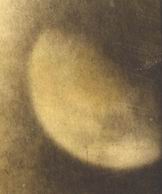
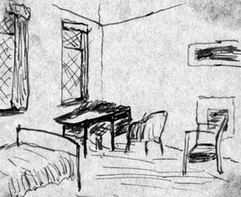
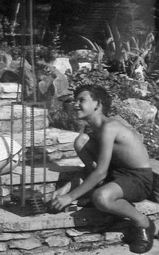 It was the heyday of Meccano, with its metal strips joined by nuts and bolts. His parents bought him several
sets. He scorned the designs in the instructions manuals and preferred his own designs with plenty of gears and motors. The Meccano set stayed with me all my life and was used in the simple gadget I constructed to move active residual stress samples for our 1995 Toshiba contract.
It was the heyday of Meccano, with its metal strips joined by nuts and bolts. His parents bought him several
sets. He scorned the designs in the instructions manuals and preferred his own designs with plenty of gears and motors. The Meccano set stayed with me all my life and was used in the simple gadget I constructed to move active residual stress samples for our 1995 Toshiba contract.
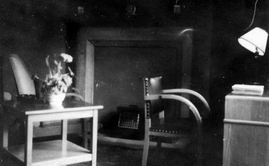


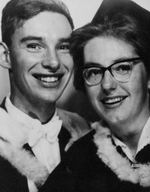

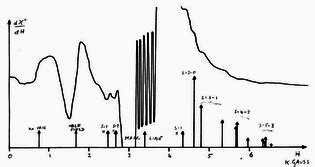 the measurement of exchange interactions between Mn++ ions in K2MnO3
was altogether more difficult. A dilute single crystal of the manganese salt had to be grown and aligned. The dilution
is critical: too dilute and the pairs will be very weak in intensity, too concentrated and there will be many "triples" and other complicating
clusters. The figure shows the electron spin resonance spectrum. The 5-fold split central Mn++ is clearly
seen in the middle. The next most intense line is the spurious "half field" line. The lowest field pair line is
clearly seen just below this. However the other lines seen are weak and poorly resolved. The exchange interaction had
to be deduced from the temperature variation of these lines.
the measurement of exchange interactions between Mn++ ions in K2MnO3
was altogether more difficult. A dilute single crystal of the manganese salt had to be grown and aligned. The dilution
is critical: too dilute and the pairs will be very weak in intensity, too concentrated and there will be many "triples" and other complicating
clusters. The figure shows the electron spin resonance spectrum. The 5-fold split central Mn++ is clearly
seen in the middle. The next most intense line is the spurious "half field" line. The lowest field pair line is
clearly seen just below this. However the other lines seen are weak and poorly resolved. The exchange interaction had
to be deduced from the temperature variation of these lines.
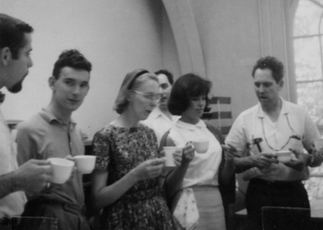

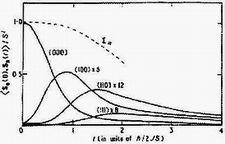
 The work was extended to general temperatures using Monte Carlo methods and lead to a paper at
the IAEA Inelastic Scattering Conference in Copenhagen 1968 [23].
The work was extended to general temperatures using Monte Carlo methods and lead to a paper at
the IAEA Inelastic Scattering Conference in Copenhagen 1968 [23].
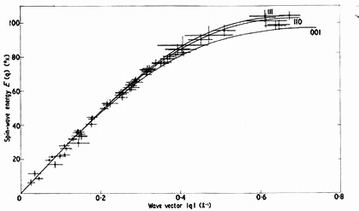

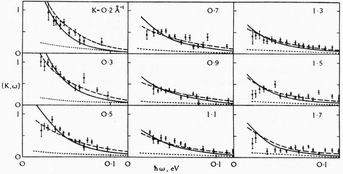 including the five 3d electron bands and Izuyama's exchange enhancement [22].
including the five 3d electron bands and Izuyama's exchange enhancement [22].
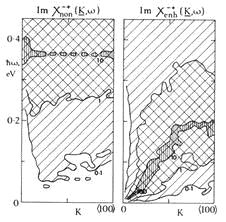
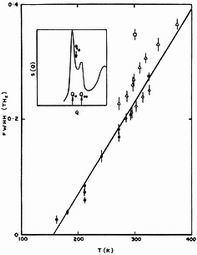
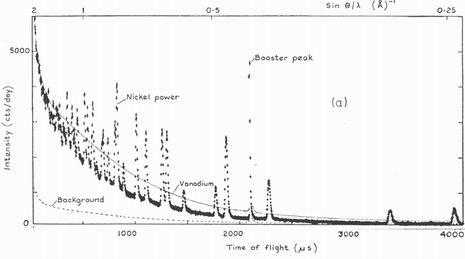

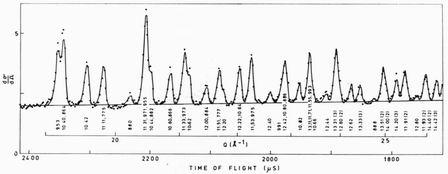
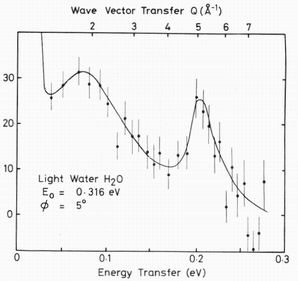
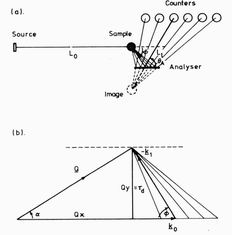
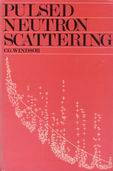


 The instrument worked only with steel specimens, and using the same iron 110 reflection near back scattering
for both monochromator and specimen. Fortunately from old itinerant magnetism days Colin had a large single
crystal of pure iron in his cupboard which was ideal as the neutron monochromator. With the iron 110
reflection at the wavelengths used, both reflections could be caused to occur at just 6o from
back scattering. The scattered powder pattern could be recorded by a Position Sensitive Neutron Detector so
placed to span the expected scattering angles.
The instrument worked only with steel specimens, and using the same iron 110 reflection near back scattering
for both monochromator and specimen. Fortunately from old itinerant magnetism days Colin had a large single
crystal of pure iron in his cupboard which was ideal as the neutron monochromator. With the iron 110
reflection at the wavelengths used, both reflections could be caused to occur at just 6o from
back scattering. The scattered powder pattern could be recorded by a Position Sensitive Neutron Detector so
placed to span the expected scattering angles.
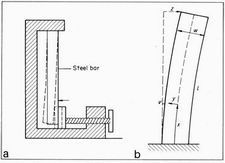
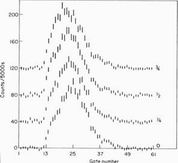
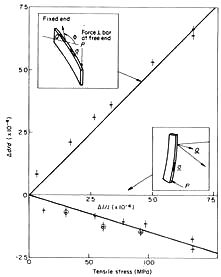
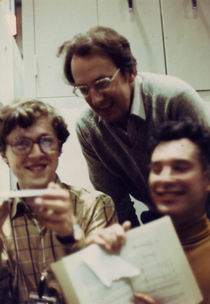
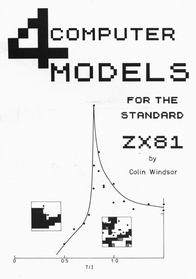
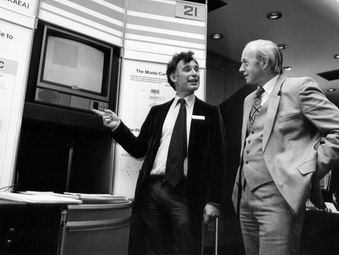 indicating vaporized atoms. As you warm the model up, more atoms "evaporate" and the black areas
break up and become changing with time. We have a liquid. The curve in the centre is the
"Specific Heat" evaluated from the change in energy of the model with temperature. It shows
the clear phase transition present in even this tiny model. Three more models were written
demonstrating a magnetic 2-dimension "Ising" model, the correlations in a one-dimensional
linear chain, and percolation in two dimensions. He published "4 Computer Models" himself in 1983 [95].
In May 1984 the 4 models reached the Royal Society Soiree.
indicating vaporized atoms. As you warm the model up, more atoms "evaporate" and the black areas
break up and become changing with time. We have a liquid. The curve in the centre is the
"Specific Heat" evaluated from the change in energy of the model with temperature. It shows
the clear phase transition present in even this tiny model. Three more models were written
demonstrating a magnetic 2-dimension "Ising" model, the correlations in a one-dimensional
linear chain, and percolation in two dimensions. He published "4 Computer Models" himself in 1983 [95].
In May 1984 the 4 models reached the Royal Society Soiree.
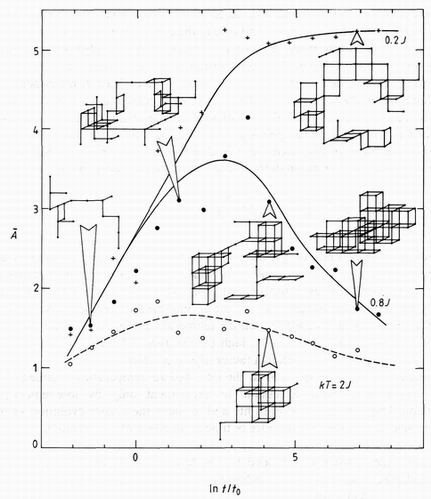

(ii) we recall from a clue, or fragment of content;
(iii) memories decay gracefully with time, rather than catastrophically."
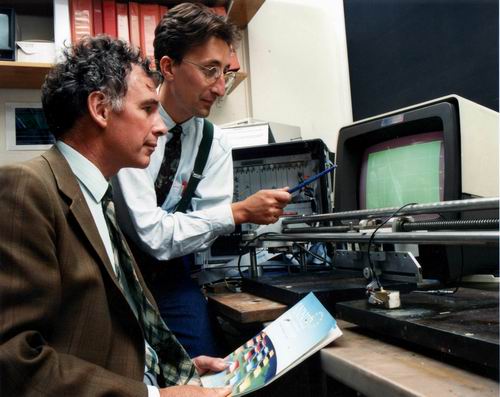
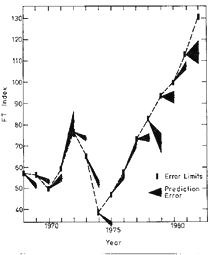
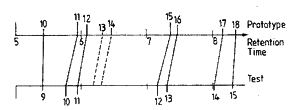
 Another similar application arose from this. Chris Bishop had now joined the group from Culham and one
day on a long plane journey he and Colin devised a related application: "Dynamic Signature Recognition".
A hand-written signature can be captured by a special tablet so that it stores the path of the signature as
a function of time. The signature is two-dimensional, but the time-line of the signature is only one-dimensional.
In a remarkably short time, C++ code was developed and a patent in place [132]. It became a quite a project with
official funding and code control so that the working code could only be modified by two signatures who had checked
the changes! Colin remembers the trials they held in Harwell's Admin block Building 329. Trials were so important
as the best way to improve the algorithm was to study the now tiny numbers of authentic signatures rejected and
undetected forgeries. They went well until a Secretary there suddenly forged the Director's.
Interestingly she was an amateur artist with a "picture" memory. Her excellent forgeries were a great help to us
is improving the many parameters of our method.
Another similar application arose from this. Chris Bishop had now joined the group from Culham and one
day on a long plane journey he and Colin devised a related application: "Dynamic Signature Recognition".
A hand-written signature can be captured by a special tablet so that it stores the path of the signature as
a function of time. The signature is two-dimensional, but the time-line of the signature is only one-dimensional.
In a remarkably short time, C++ code was developed and a patent in place [132]. It became a quite a project with
official funding and code control so that the working code could only be modified by two signatures who had checked
the changes! Colin remembers the trials they held in Harwell's Admin block Building 329. Trials were so important
as the best way to improve the algorithm was to study the now tiny numbers of authentic signatures rejected and
undetected forgeries. They went well until a Secretary there suddenly forged the Director's.
Interestingly she was an amateur artist with a "picture" memory. Her excellent forgeries were a great help to us
is improving the many parameters of our method.

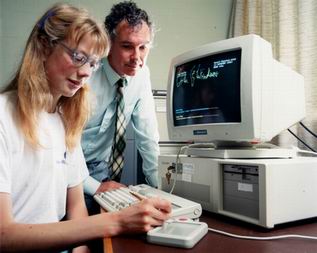
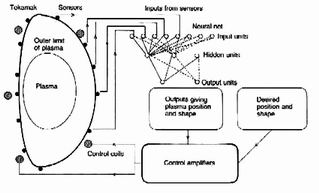
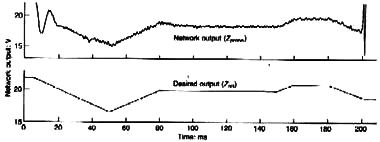
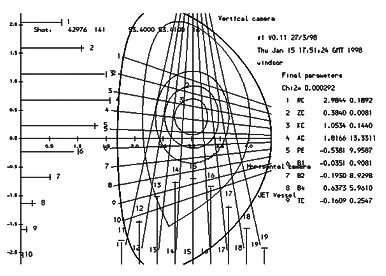
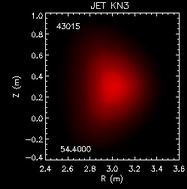

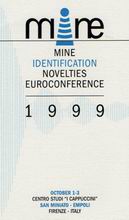

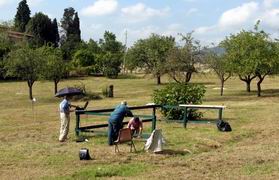
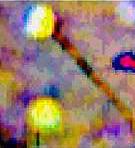
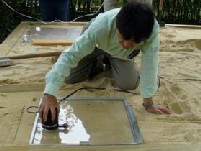


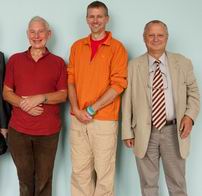

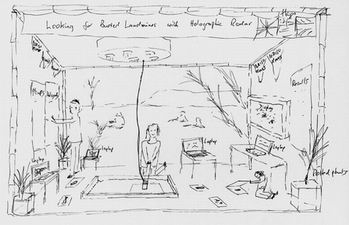
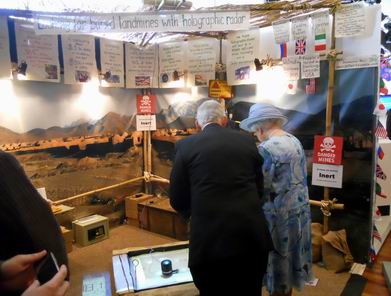

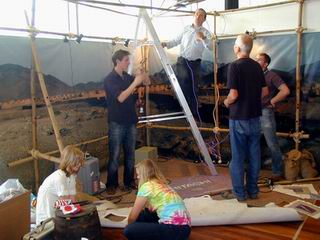
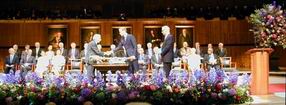

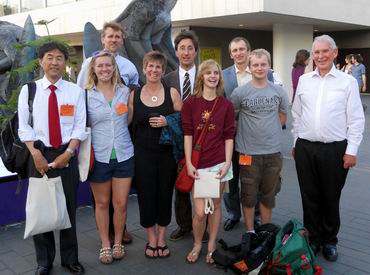
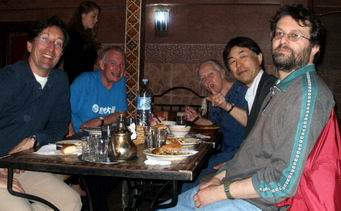

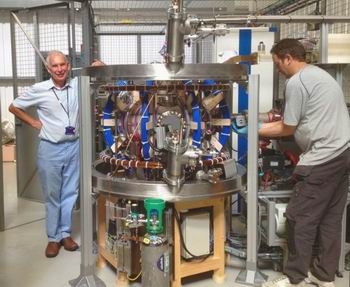
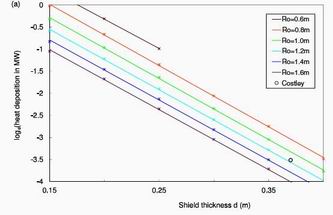
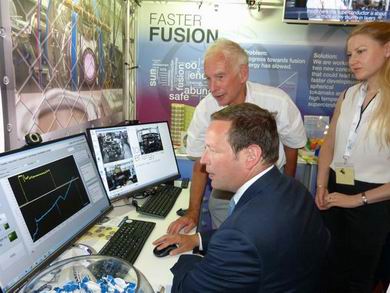
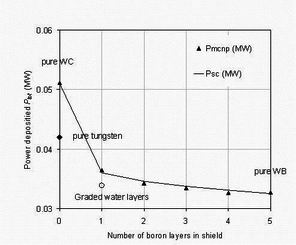
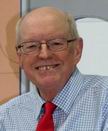
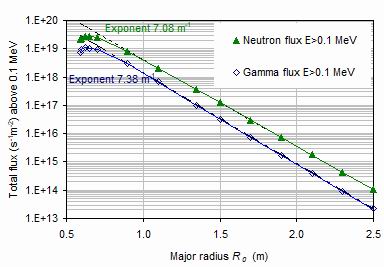

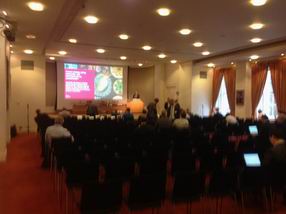 With co-organisers Dennis Whyte from MIT, Jack Connor from Culham,
Guenter Janeschitz from ITER and Melanie Windridge from Tokamak Energy our application was approved. We had expected serious opposition
from the fusion establishment who tend to favour big, slow and trusted! In the end, the hall was nearly full, the speakers all kept to time,
the discussion periods were always truncated. Even Colin's introductary and summary talks went OK.
With co-organisers Dennis Whyte from MIT, Jack Connor from Culham,
Guenter Janeschitz from ITER and Melanie Windridge from Tokamak Energy our application was approved. We had expected serious opposition
from the fusion establishment who tend to favour big, slow and trusted! In the end, the hall was nearly full, the speakers all kept to time,
the discussion periods were always truncated. Even Colin's introductary and summary talks went OK.
